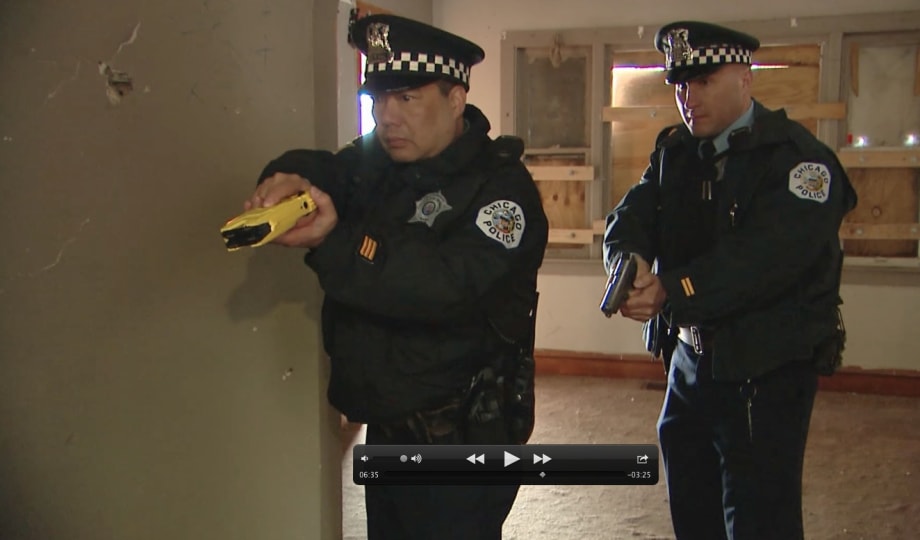Officer Presence—You are on the scene. This is what is upsetting the dog. One of the best ways to deal with this is get someone the dog knows, preferably the owner, to restrain or lock up the animal.
If the owner or another person known to the dog is not available, you may be able to gain the dog’s acceptance by softening your approach. Dog experts recommend you stop moving toward the dog, assume a bladed stance sideways to the dog, and avoid eye contact, while talking to him in a strong, reassuring tone. This may have a calming effect that will allow you to safely conduct your business and leave.
Verbal Commands—Dog expert and former officer Jim Osorio, founder of Texas-based police training company Canine Encounters, says speak to the dog throughout the interaction in a firm, conversational tone. "If you yell and scream at a dog, you are asking to be bit," he warns.
Soft Technique—Draw a weapon with your weak hand, but don't show it to the dog. Osorio who teaches this use-of-force continuum in his classes, recommends a closed expandable baton. He says to keep it closed, unless you need to escalate.
Hard Technique—Deploy the tool once the angry dog gets within 8 to 10 feet of you. It could be a baton, TASER, or OC. If you choose a TASER or OC, then canine behavior expert and author Brian Kilcommons recommends you not push the weapon toward the dog. Doing so may force the dog to bite the tool and perhaps your hand and arm. In one case in California, an officer tried to strike a dog with his duty gun. The dog bit the gun and the officer’s arm, and the officer shot the dog to death.













